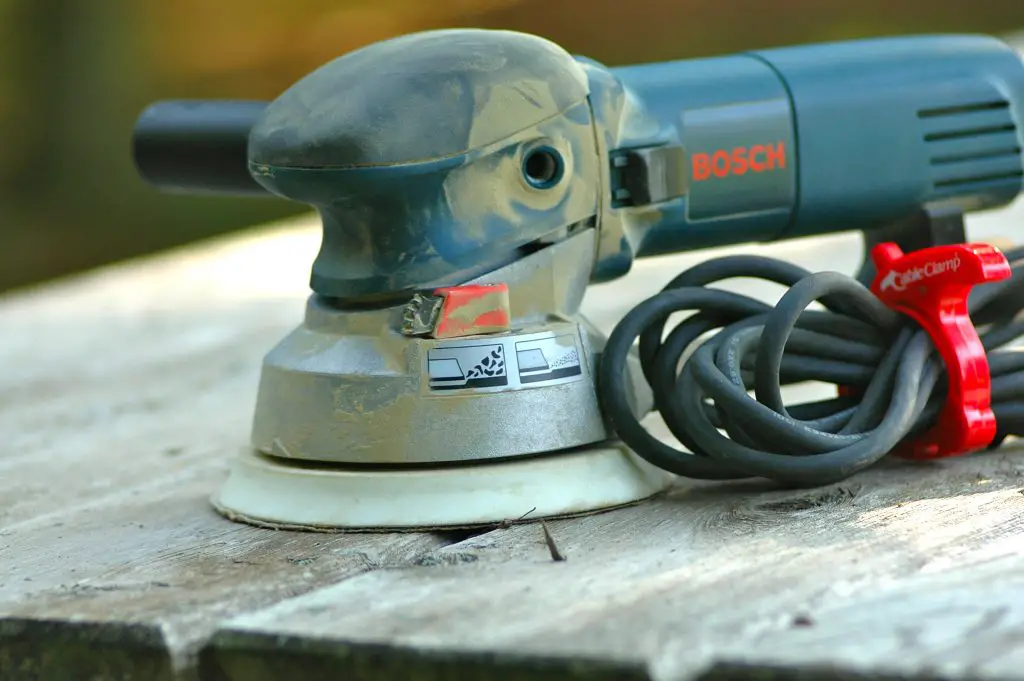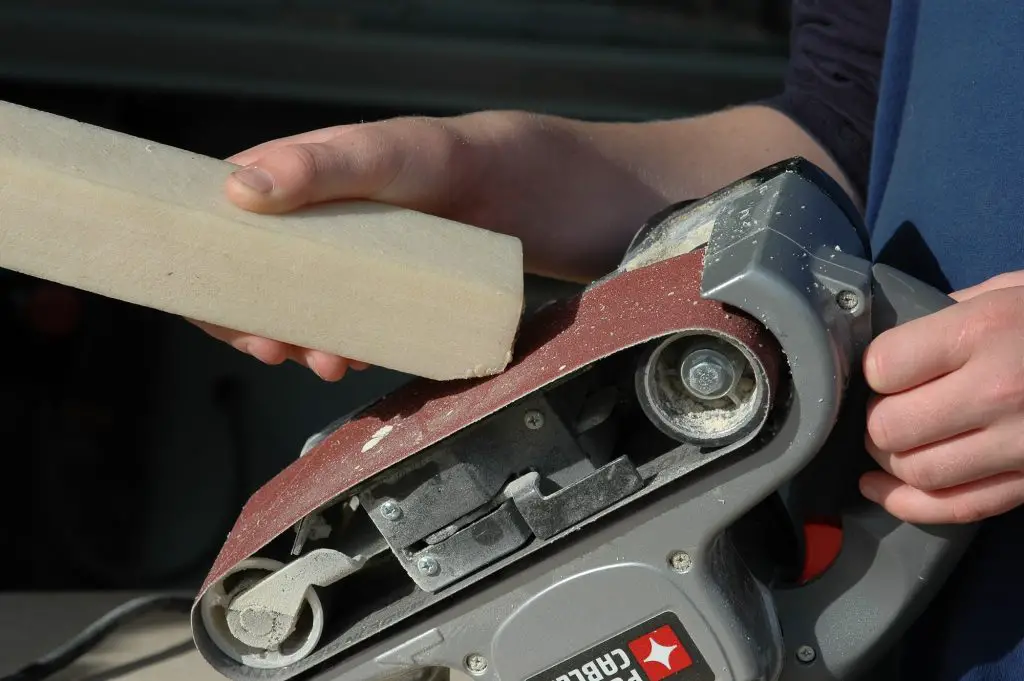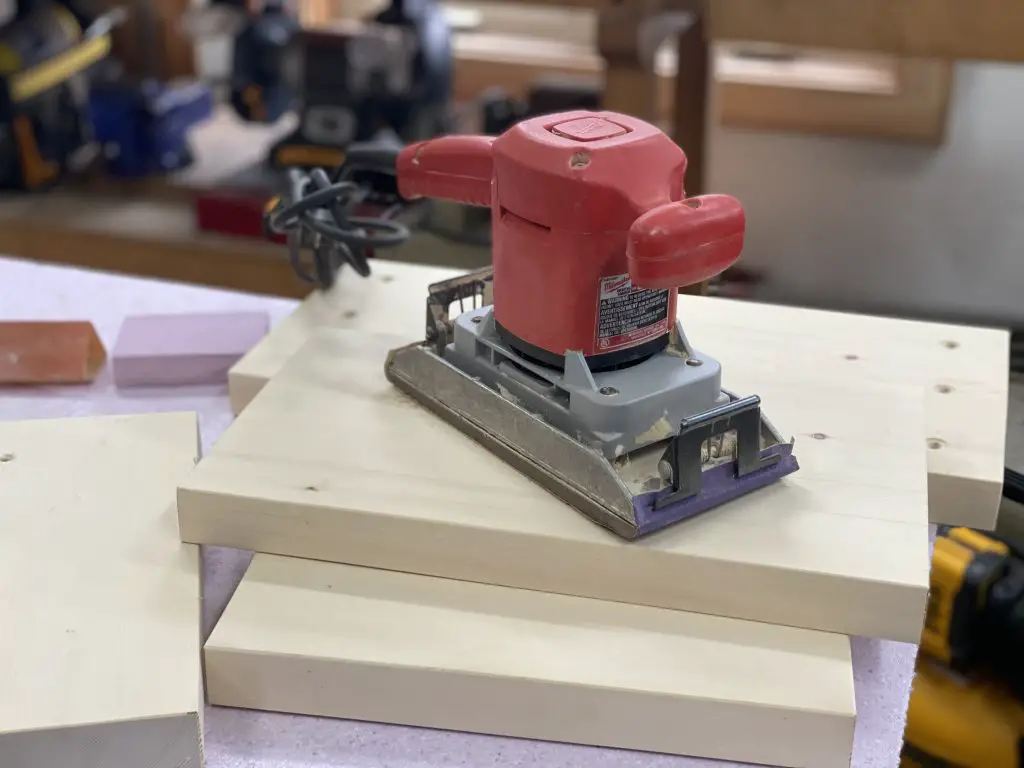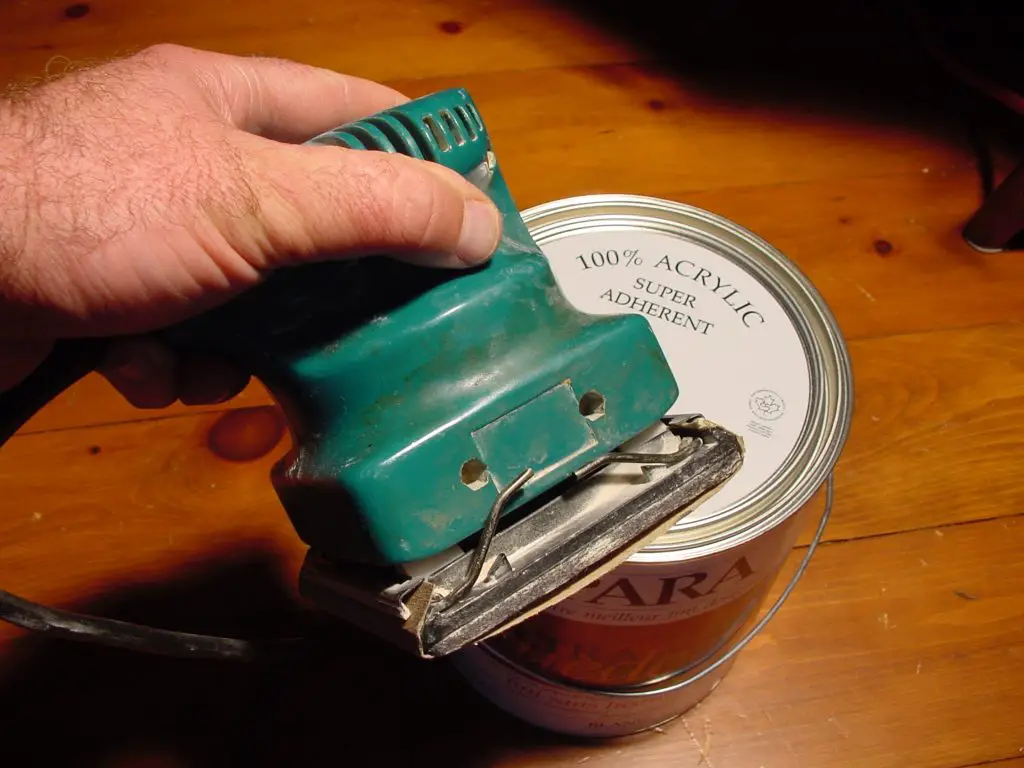Everyone likes silky-smooth wood surfaces, and sanders devoted to making this happen are now much better and more varied than ever. If you’ve got some woodworking projects in mind, or a house to fix up, then there are four types of sanders you might consider. They all have pros and cons, as you’ll see in the article.
Before that, here’s a video on sanding wood properly. It comes from my online course WOOD FINISHING FOR BEGINNERS.
- Reading Time = 4 1/2 minutes
- Video Watch Time = 3 1/2 minutes
1) The Random Orbital Sander

Pros:
- By far the most versatile of all power sanders.
- Random orbit sanders remove material at a good clip, yet also prepares smooth surfaces using the correct abrasive and a light hand. While this seems like a contradiction, the secret behind versatile performance is the two-part movement of the disc itself.
- While the circular sanding pad is rotating around a central axis, the whole disc is also orbiting randomly at the same time. It’s sort of like the way the earth spins while also orbiting around the sun.
- The two motions come together on a wood surface to produce a sanding pattern that leaves smooth results, regardless of the fact that the abrasive moves both along, across and diagonally on the wood grain.
- I chose to buy a variable speed random orbit sander a couple of decades ago, and I can recommend this version of the tool.
- The option of turning down the speed is useful when preparing outdoor wood surfaces before renewing an existing finish.
Cons:
- Not ideal for fine finishing because random orbit sanders tend to leave swirl marks behind. These can be hard to see until a finish has been applied. This is why I never use a random orbit sander for any kind of fine work.
- Even random orbit sanders with on-board dust collection still put a lot of dust into the air.
2) The Belt Sander

- If your home improvement plans include furniture-building, then consider a hand-held belt sander.
- This tool is ideal for heavy-duty smoothing and leveling of solid wood and veneered sheet goods.
- It’s also vital for preparing edge-glued solid panels after they come out of the clamps.
- In situations where you need to remove lots of wood quickly, the belt sander is your best bet.
- You want a medium-size unit with a dust bag (though all brands still kick some dust into the air), sporting a belt in the 3” x 21” or 3” x 24” size.
- Belt sanders can’t do everything, but they will do the important, power-intensive jobs well.
- I’d steer clear of 4” x 24” machines, unless you’ve got a good reason for the extra size, cost and weight.
- I keep 80, 120 and 150-grit sanding belts in my shop; anything coarser is unnecessary, and anything finer I prefer to tackle by hand or with a random orbit sander.
- A rubber crepe block cleans dust and resin from all sanding belts and multiplies their life many times. Just hold the block against a dirty, spinning belt and watch the sawdust and resin fly off. You can see this in the photo above.
Pros:
- Fast removal of wood.
- Excellent ability to level uneven surfaces.
Cons:
- It’s easy to gouge the wood and create unwanted grooves if the sander is not held level.
- Heavier than other hand-held sander
3) Half-Sheet Sander

- This little-used sander is an excellent option for intermediate sanding after using a belt sander.
- Half-sheet sanders remove wood fairly quickly, but unlike random orbit sanders they don’t create swirl marks (at least, not many).
Pros:
- Great intermediate sander
- Uses half sheets of regular sander, so half-sheet sanders are economical to operate.
Cons:
- No built-in dust collection on most models
- Can’t replace a belt sander
4) Quarter-Sheet Finishing Sander

Pros:
- The best power sander for final sanding.
- No swirl marks left behind
- Also ideal for sanding wood finishes between coats
Cons:
- Very little wood removal
- Few finishing sanders have on-board dust collection, and those that do don’t collect dust well in my experience.
Sanding for an Ultra-Smooth Finish
It’s impossible to properly finish wood without sanding lightly between coats to level and smooth the newly-sealed surface. Even if you start out with what feels like smooth wood, it won’t stay that way after the first coats of urethane, varnish or shellac dry. The wood fibers that were laid flat during the sanding process pop up as they absorb finishing liquid, then harden in the popped-up position.
Sanding between coats with a 220 or 240-grit abrasive, with a quarter-sheet finishing sander, is the best way to get the surface smooth again before another coat goes on.
Although it’s quite possible to complete between-coat sanding by hand, a non-orbital, palm-style quarter-sheet finishing sander makes the job go much faster, especially when you’ve got to cover a lot of ground on big furniture or wood floors. In the time period before you get one, finish-sanding by hand is quite practical for small jobs.
 I hope you found this article and video useful. Please consider helping me cover the cost of creating and publishing content like this. Click the “buy me a coffee” button below for a simple, safe and fast way to make a contribution. Thank you very much for doing your part to help keep this website up and running.
I hope you found this article and video useful. Please consider helping me cover the cost of creating and publishing content like this. Click the “buy me a coffee” button below for a simple, safe and fast way to make a contribution. Thank you very much for doing your part to help keep this website up and running.
– Steve Maxwell



